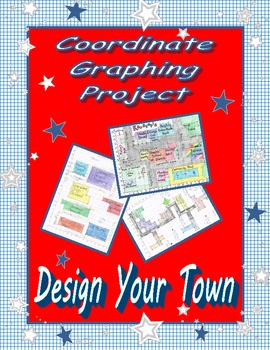Coordinate Graph (Ordered Pairs) Project & Rubric "Design Your Town"
- PDF
What educators are saying
Description
Coordinate Graph (Ordered Pairs) Project and Rubric
Design Your Town
This fun project allows students to demonstrate their knowledge of coordinate graphing and ordered pairs by designing their own town. Instructions include requirements for minimum number of buildings, areas, and points in the town, which they must label. Students must also list coordinates for each item on a separate sheet of paper so it may be recreated, and they must write questions about the town they designed. I've included student samples you may use as a model.
All of my classes have really enjoyed this activity, and it is a great performance assessment for a coordinate graphing unit.
Included: directions, rubric, & student samples
I truly value all feedback and encourage you to contact me if you have any questions, comments, or suggestions for improvement.




